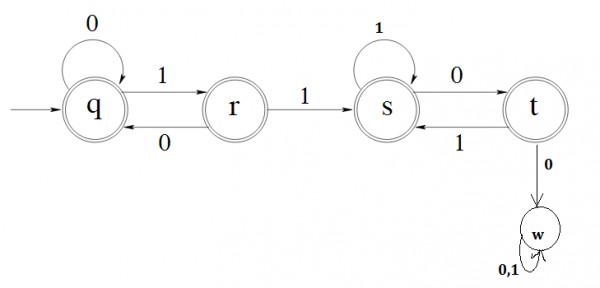Let us solve the problem individually,So
$R(L)=R(L1)R(L2)$
where $L1$ is the language of all strings that do not contain any pair of 1’s and
$L2$ is the language of all strings that do not contain any pair of 0’s.
$R(L1)=(0+10)^{*}(1+\epsilon )$. and
$R(L2)=(1+01)^{*}(0+\epsilon )$
So $R(L)=(0+10)^{*}(1+\epsilon )(1+01)^{*}(0+\epsilon )$.
After simplifying the regular expression,
$R(L)=(0+10)^{*}(1+01)^{*}(0+\epsilon )$.
NFA for above language will be,

Required DFA will be
